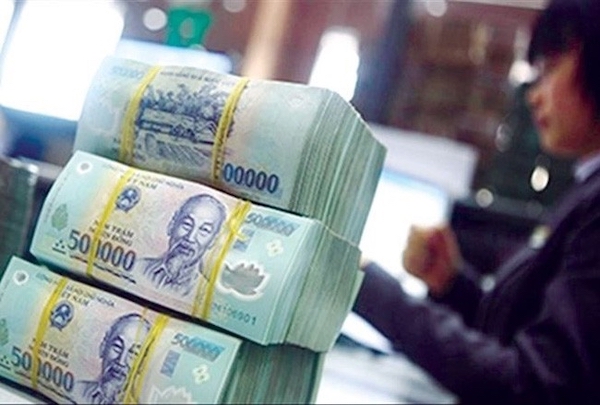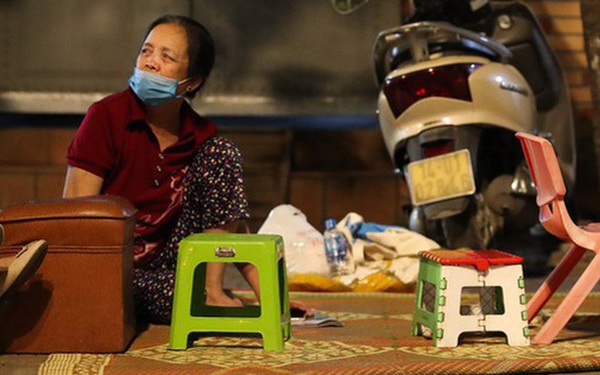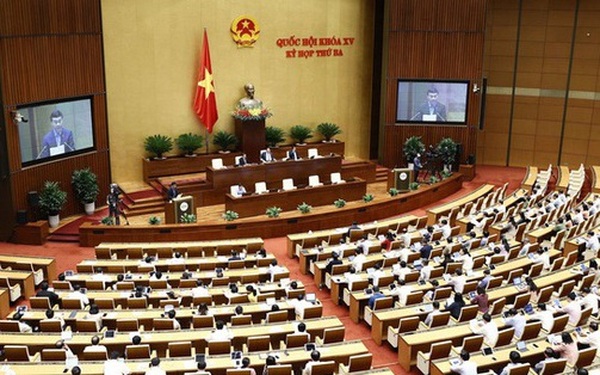Find loan solutions for low-income homebuyers
Experiences from other countries
Pham Xuan Hoe, former deputy director of the Institute of Strategy, State Bank of Vietnam, said that over the past time, we have all discussed how to control how to most effectively allocate capital sources, on the one hand to help businesses reduce financial pressure, on the other hand, help the economy develop stably and sustainably.

Recently, there are more than 40,000 billion VND that the Bank for Social Policies of Vietnam is implementing, but accessing loans to buy social housing for the poor is also a problem.
But now, when summarizing Vietnam’s total financial assets has accounted for more than 300% of GDP, if compared with the development period of Korea or some countries in the region, this level is in Vietnam. is too high. In which, there is a huge error in the structure of the economy, including that the structure of the real estate sector is unreasonable, the high-value real estate segments for the rich are many, while the affordable segment becomes more popular. down for low-income people, whose real housing needs are very little. Recently, there are more than 40,000 billion VND that the Vietnam Bank for Social Policies is implementing, but accessing loans to buy social housing for the poor is also a problem because the conditions and standards are quite high. Therefore, there must be a project to structure the real estate market in the most complete way for the Government and the National Assembly to solve this big problem of the country.
According to data from the Ministry of Construction, experience in some countries around the world on how to support low-income people to buy a house, such as: In the Philippines, housing programs for low-income people are very diverse. , with the coordinated participation of the community, non-governmental organizations and state agencies. Philippine law requires all private organizations to contribute to the housing development fund for the poor with a deduction from profits. After that, NGOs have to carry out the housework for the poor themselves.
Or in Thailand, the Government of this country has established the Housing Community Agency (UCDO) under the Ministry of Housing, which has the role of linking other organizations to mobilize finance for housing development; policy making, planning and design. Regarding financial policy, Thailand allows UCDO to set up its own bank for the purpose of providing residential credit; provide loans to low-income people with preferential interest rates, so that they can buy houses with installments. In addition, there is a policy of deducting 20% of income tax on the rich group to add to the Housing Development Fund.
In addition, a model worth learning is that, financial investment in the housing construction sector in Germany is made mainly through the system of real estate mortgage banks and construction savings banks. build.
Unlike commercial banks, real estate mortgage banks are only allowed to operate in a limited number of credit operations. The main commercial transaction of these banks is to provide long-term credit to people who buy houses, which are guaranteed to repay their debts by mortgaged land and houses. The functions and working principles of these banks are strictly regulated in the “Law on mortgage banking” and “Law on credit operations” in Germany.
Besides, the form of credit and financial accumulation of the people to solve the housing problem is implemented very effectively with the help of the State in Germany, which is the system of “construction savings banks”. “. A feature of this system is that credit financing is carried out in a large cycle, including 2 stages: accumulation phase and credit borrowing phase.
The depositor (fund member) first signs a contract with the fund (savings bank), which stipulates that the depositor is liable for a certain period of time (minimum at least 1.5-2 years). ) must deposit money into the fund and enjoy profits at an agreed-upon interest rate lower than the market. The monthly amount to be deposited into the fund and the accumulation period are determined by the depositors according to their financial ability. Savings banks are responsible for granting credit to depositors at a low interest rate (which is pre-agreed and independent of market fluctuations) at the end of the accumulation period.
The credit loan phase begins when the depositor has accumulated a large enough amount, about 40-50% of the loan amount depending on the loan interest rate. After that, the depositor receives the deposited amount and signs a contract to borrow the remaining amount to buy a house, the mortgaged property is the house purchased.
Creating a competitive environment for banks
Sharing his perspective, Mr. Nguyen Trung Hung, Marketing Director of Dai Viet Huong Company assessed that in 2021, there will not be a single low-income house for sale, while society still lacks 7 million average apartments. population and the potential to meet the market is about 3 million units. As China’s data shows, the country’s affordable apartments have a surplus of about 8% of the population. If we can do it like China, Vietnam must have an excess of 8 million apartments, not 7 million as it is now. Meanwhile, Vietnamese real estate developers can only produce 18,000 luxury apartments each year. To see how the serious phase difference in the real estate market is happening.

In 2021, not a single low-income house will be sold, while society still lacks 7 million affordable apartments
Is the real estate industry trying to create a scarcity so that low-income people have to hunt for cheap apartments? As for apartments of 3 billion VND or more, low-income workers are not able to access them. Also looking at the experience in China today, they sell a 30-year apartment with an interest rate of 4% a year, even though the real interest rate is at 7%, which means maybe 2-4 years from now, the country This will bring inflation expectations below 2%, so that long-term interest rates will remain 4-5%, then they will dare to sell houses like that.
“In my opinion, the problem that needs attention here is that profits create a scarcity similar to the place where credit for real estate is a bank. In which, the bank’s profit margin is too large, the interest rate is too large. deposit rate is about 5%, lending interest rate is from 8% or more, profit margin is from 3-7% depending on the term, meanwhile, the bank’s selection of lenders is also strict, usually for those People who have mortgaged real estate have a high safety rate, while customers who are businesses, it is difficult to get long-term loans…
Experts agree that low-income housing development policy is becoming urgent for large cities in the country. Therefore, the State needs to develop and expand the support package for low-income tenants and buyers and support investors to get preferential loans through the Bank. We expect competition in the banking industry, new banks entering the market, to create a foundation for low inflation expectations and lower interest rates on the country’s long-term path. Therefore, it is also recommended that the state management agencies and the Government create a playing field with fair and healthy competition, not allowing the monopoly position of banks as it is now”, Mr. Hung suggested. .
In particular, focusing on the introduction of specific incentive mechanisms and policies, creating conditions for construction enterprises to develop low-income housing projects so that investors can still make profits. It is possible to apply the model of a Housing Savings Fund with the cooperation of those wishing to buy a house, which will contribute to reducing the loan period and benefit both the investor, the State and the buyer.
On the side of businesses, it is necessary to restructure investment, redirect the development of many affordable housing projects with full amenities; join with the State in building low-income housing, contributing to socio-economic development.
The Ministry of Construction has just sent an official dispatch to the Social Policy Bank about the demand for preferential loans from the Social Policy Bank in accordance with Resolution No. 11/NQ-CP of the Government. Accordingly, out of the total capital of 15,000 billion VND assigned in 2022 and 2023, the Ministry of Construction agreed with the proposal of the Bank for Social Policies on the expected loan plan in 2022 is 6,800 billion VND, in 2023 is expected to be 6,800 billion VND. 8,200 billion VND.
Business Forum
at Blogtuan.info – Source: cafebiz.vn – Read the original article here



